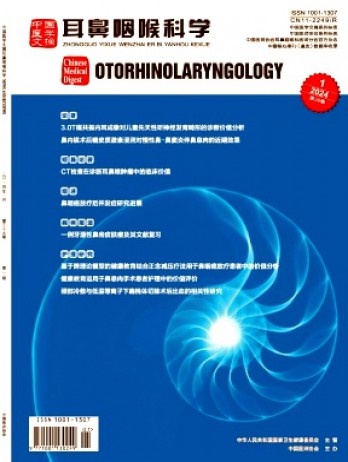首頁 > 期刊 > 自然科學(xué)與工程技術(shù) > 醫(yī)藥衛(wèi)生科技 > 皮膚病與性病 > 中國醫(yī)學(xué)文摘·耳鼻咽喉科學(xué) > Differentiation of pulmonary mucosa-associated lymphoid tissue lymphoma and pulmonary adenocarcinoma by radiomics 【正文】
Differentiation of pulmonary mucosa-associated lymphoid tissue lymphoma and pulmonary adenocarcinoma by radiomics
林斌 Dept; Radiol; 2nd; Affil; Hosp; Zhejiang; Univ; Med; Sch; Hangzhou; 310009
- pulmonary
- lymphoid
摘要:Objective To differentiate between pulmonary mucosa-associated lymphoid tissue lymphoma(MALT)and adenocarcinoma by radiomics,and then evaluate the diagnostic value of this novel approach.Methods We retrospectively analyzed CT images of pulmonary MALT lymphoma(n=16)and invasive pulmonary adenocarcinoma(n=41)and all these cases were confirmed by pathology in the Second Affiliated Hospital of Zhejiang University School of Medicine from June 2012 to June 2017.After we delineated the lesions as region of interest(ROI),sixty-one radiomics features were extracted from each individual's CT images by Radcloud 1.0.All cases in each group were randomly divided into training set(70% cases)and testing set(30% cases),with 7 features(Wilcoxon test)of which showed group differences and were used to train and validate a support vector machine(SVM)classifier.Results Seven of 61 radiomics features showed differences between the two groups,i.e.10t h percentile,mean,median,minimum,total energy,run length non uniformity,gray level non uniformity.Using these 7 features,the resulted SVM successfully differentiated the two diseases.The SVM showed high performance with 90% precision,recall 0.89,F1-score 0.87,ROC 0.75.Conclusion Pulmonary MALT and adenocarcinoma differ in radiomics features and machine learning can utilize these features to differentiate between pulmonary MALT and adenocarcinoma.Combination of radiomics and machine learning is promising in the differential diagnosis of the two diseases.
- pulmonary
- lymphoid
摘要:Objective To differentiate between pulmonary mucosa-associated lymphoid tissue lymphoma(MALT)and adenocarcinoma by radiomics,and then evaluate the diagnostic value of this novel approach.Methods We retrospectively analyzed CT images of pulmonary MALT lymphoma(n=16)and invasive pulmonary adenocarcinoma(n=41)and all these cases were confirmed by pathology in the Second Affiliated Hospital of Zhejiang University School of Medicine from June 2012 to June 2017.After we delineated the lesions as region of interest(ROI),sixty-one radiomics features were extracted from each individual's CT images by Radcloud 1.0.All cases in each group were randomly divided into training set(70% cases)and testing set(30% cases),with 7 features(Wilcoxon test)of which showed group differences and were used to train and validate a support vector machine(SVM)classifier.Results Seven of 61 radiomics features showed differences between the two groups,i.e.10t h percentile,mean,median,minimum,total energy,run length non uniformity,gray level non uniformity.Using these 7 features,the resulted SVM successfully differentiated the two diseases.The SVM showed high performance with 90% precision,recall 0.89,F1-score 0.87,ROC 0.75.Conclusion Pulmonary MALT and adenocarcinoma differ in radiomics features and machine learning can utilize these features to differentiate between pulmonary MALT and adenocarcinoma.Combination of radiomics and machine learning is promising in the differential diagnosis of the two diseases.
注:因版權(quán)方要求,不能公開全文,如需全文,請咨詢雜志社

中國醫(yī)學(xué)文摘·耳鼻咽喉科學(xué)
- 預(yù)計1個月內(nèi) 預(yù)計審稿周期
- 0.2 影響因子
- 醫(yī)學(xué) 快捷分類
- 雙月刊 出版周期
主管單位:中華人民共和國國家衛(wèi)生健康委員會;主辦單位:中國醫(yī)療保健國際交流促進(jìn)會